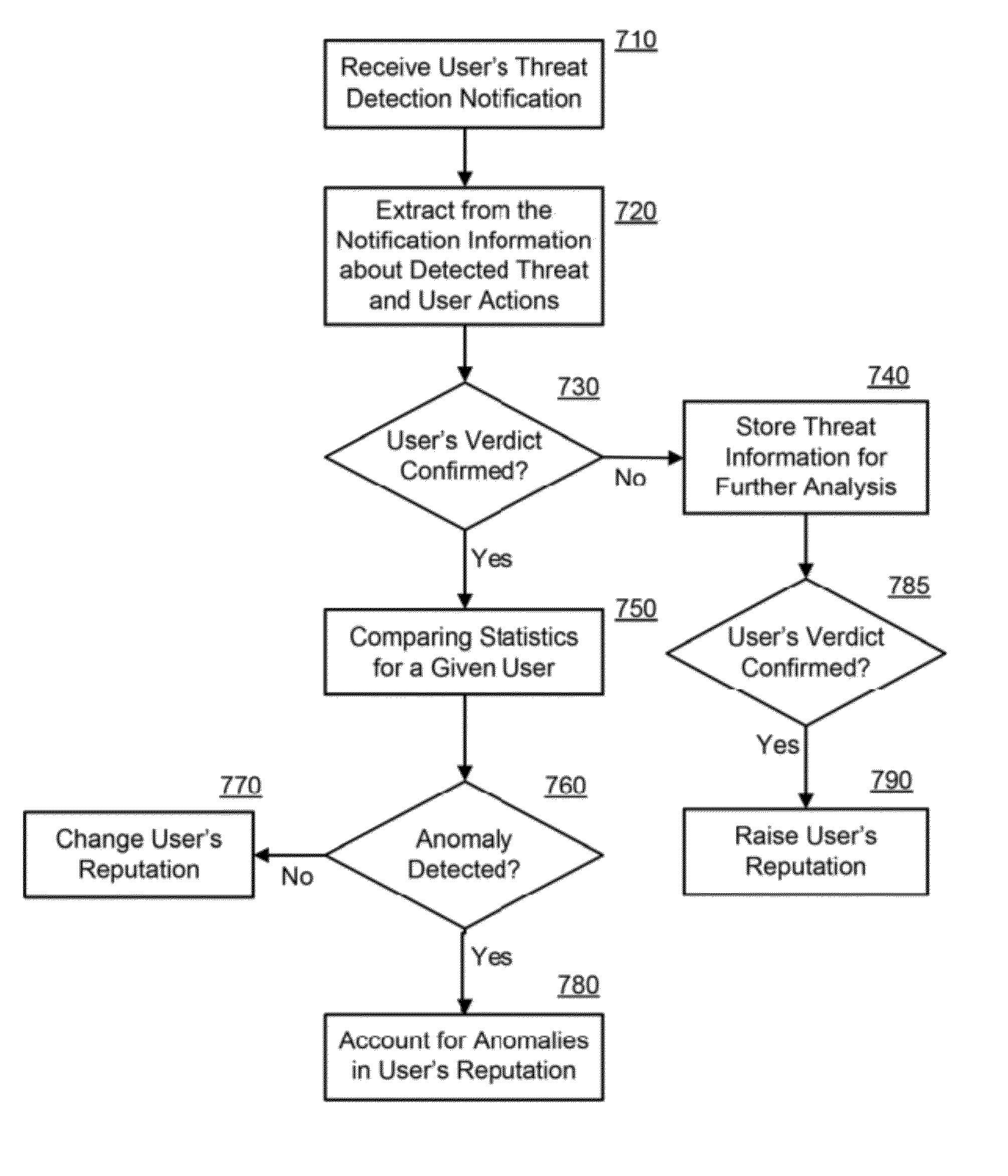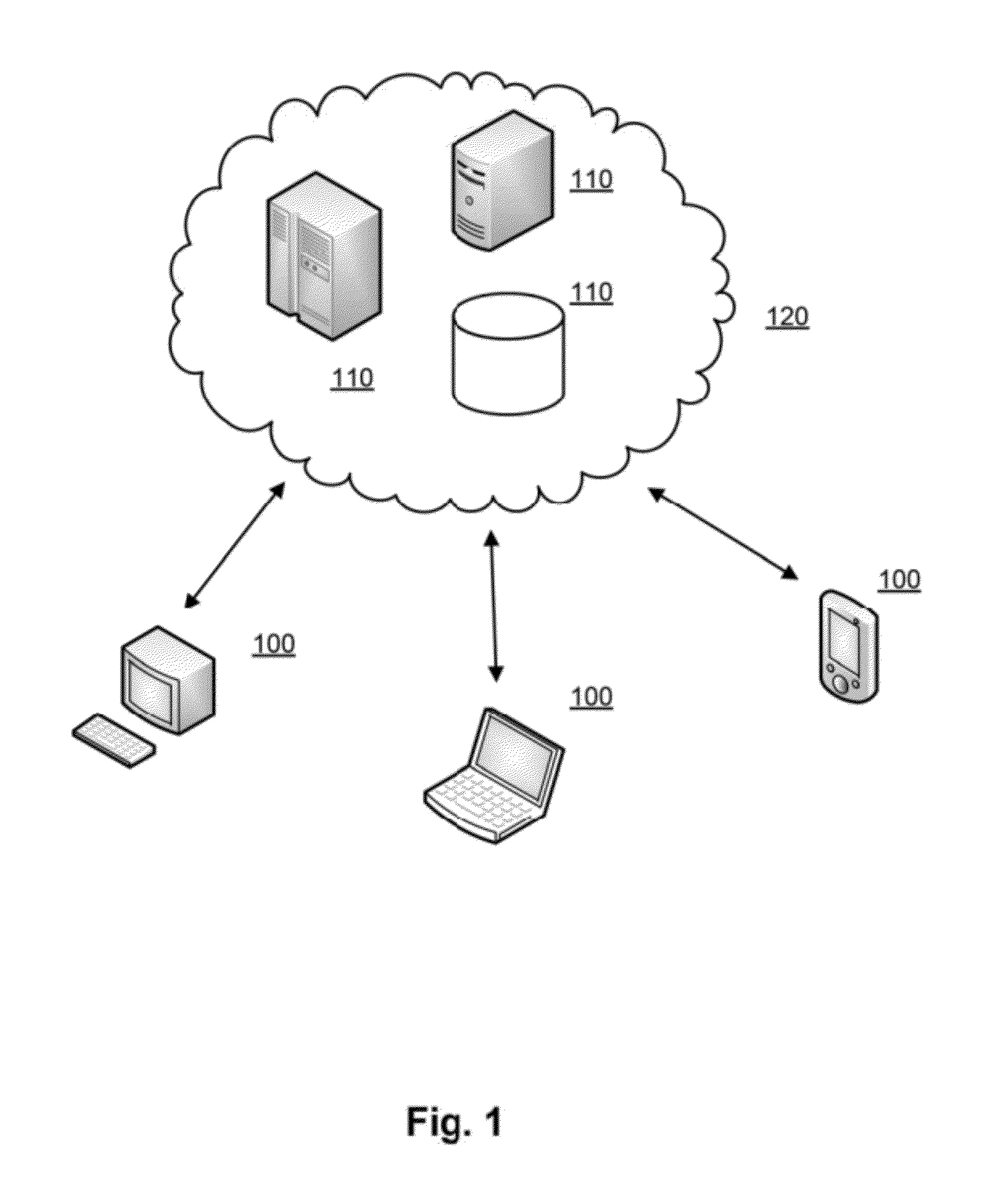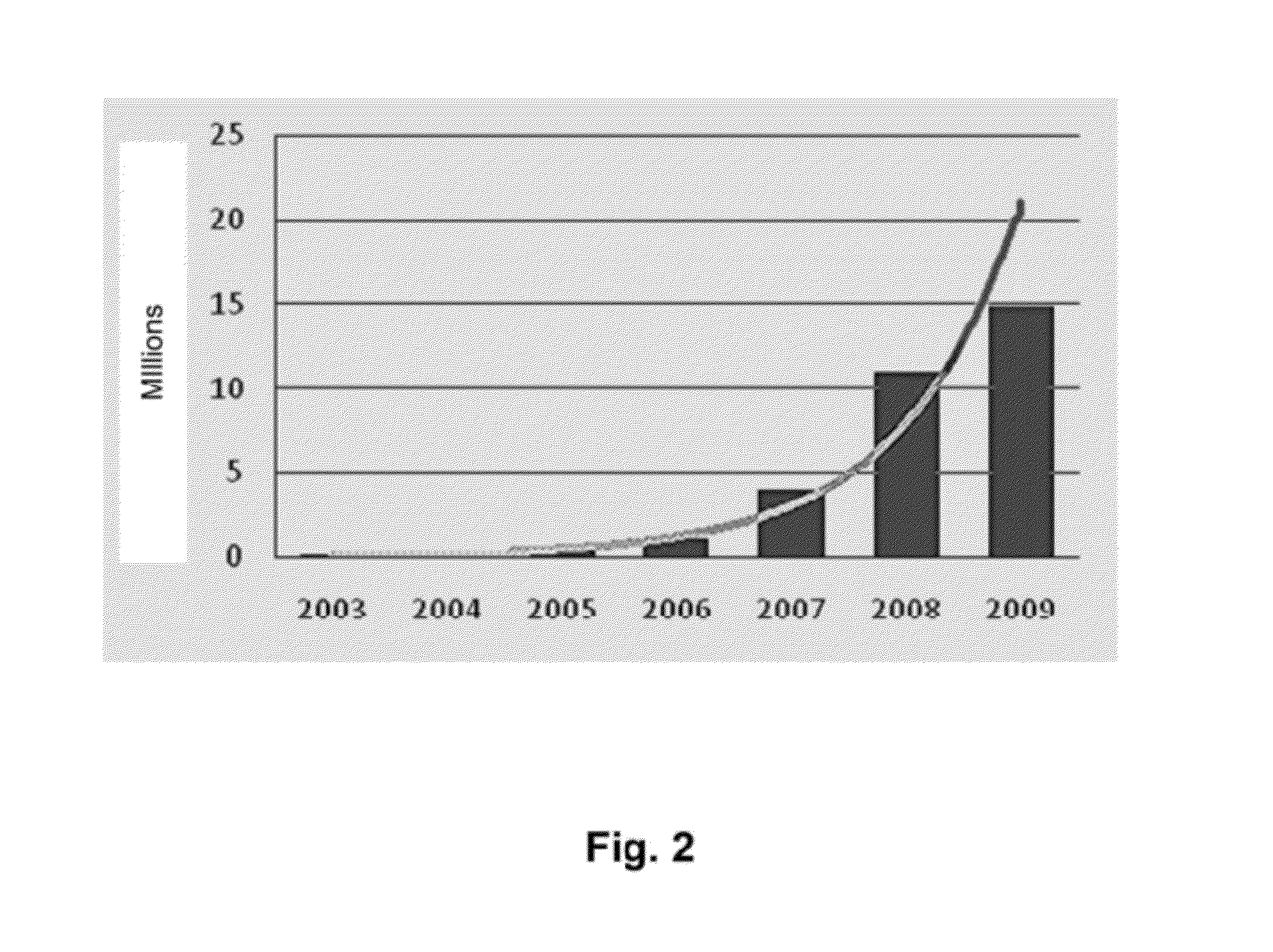System and method for detecting computer security threats based on verdicts of computer users
a computer security and user-generated technology, applied in the field of computer security, can solve the problems of inability to increase the same pace with the volume of threats, the limited capabilities of antivirus companies, and the hardware for processing new threats, and achieve the effect of high level of expertis
- Summary
- Abstract
- Description
- Claims
- Application Information
AI Technical Summary
Benefits of technology
Problems solved by technology
Method used
Image
Examples
Embodiment Construction
[0042]Example embodiments of the present invention are described herein in the context of systems, methods and computer program products for detecting computer security threats based on verdicts of computer users. Those of ordinary skill in the art will realize that the following description is illustrative only and is not intended to be in any way limiting. Other embodiments will readily suggest themselves to those skilled in the art having the benefit of this disclosure. Reference will now be made in detail to implementations of the example embodiments of the invention as illustrated in the accompanying drawings. The same reference indicators will be used to the extent possible throughout the drawings and the following description to refer to the same or like items.
[0043]Although example embodiments of the present invention are directed to providing computer security-associated services in a cloud computing environment, those of ordinary skill in the art will appreciate that in ot...
PUM
 Login to View More
Login to View More Abstract
Description
Claims
Application Information
 Login to View More
Login to View More - R&D
- Intellectual Property
- Life Sciences
- Materials
- Tech Scout
- Unparalleled Data Quality
- Higher Quality Content
- 60% Fewer Hallucinations
Browse by: Latest US Patents, China's latest patents, Technical Efficacy Thesaurus, Application Domain, Technology Topic, Popular Technical Reports.
© 2025 PatSnap. All rights reserved.Legal|Privacy policy|Modern Slavery Act Transparency Statement|Sitemap|About US| Contact US: help@patsnap.com



